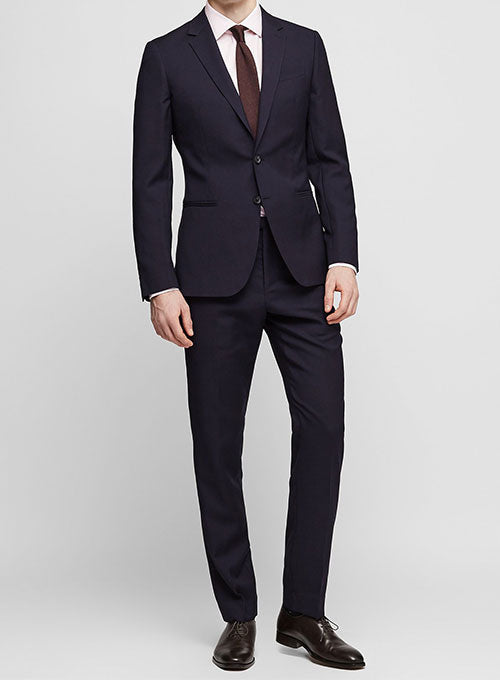Wedding Suits Perth: Tailored Excellence for Your Wedding Day
Wiki Article
Recognizing the Tailoring Process: From Textile Selection to Final Fitting for the Perfect Wardrobe
The tailoring procedure is a complicated interplay of art and science, starting with the vital decision of fabric selection and culminating in the precise changes of final fittings. Each textile type brings unique top qualities that affect not only the visual charm yet likewise the garment's longevity and viability for different occasions.Relevance of Material Selection
Picking the best fabric is vital in the customizing process, as it straight influences the convenience, toughness, and overall visual of the final garment. The option of fabric establishes the foundation for the garment's performance, capability, and style. Various fabrics have unique residential or commercial properties, such as breathability, stretch, and weight, which can dramatically impact just how the garment drapes and fits the body.
A tailored item made from a proper material not only showcases workmanship however additionally boosts the wearer's confidence. Consequently, recognizing the nuances of fabric option is vital for any type of customizing venture. It makes certain that the end product not just meets the visual wishes of the client yet likewise straightens with practical requirements, consequently achieving an unified balance in between form and feature in the tailored closet.
Sorts Of Fabrics and Their Uses
Comprehending the various kinds of fabrics offered is vital for making notified choices during the customizing process. Each material possesses one-of-a-kind attributes that determine its suitability for details garments and occasions.Its versatility enables it to be tailored right into every little thing from shirts to dresses. Its natural flexibility assists garments keep shape over time.
Silk radiates luxury and is lightweight, making it perfect for eveningwear and delicate blouses; nonetheless, it needs cautious handling as a result of its delicacy. Bed linen, with its textured finish, is a popular choice for cozy climates, supplying a crisp and ventilated feeling, yet it wrinkles conveniently, which might influence the garment's look.
Artificial materials, such as polyester and nylon, deal longevity and resistance to creases, making them ideal for everyday wear and energetic apparel. Understanding these textile kinds and their residential or commercial properties enables better decision-making, guaranteeing that each tailored item not just fits well yet likewise lines up with the designated function and event.
The Tailoring Methods Discussed
The art of tailoring relies upon a selection of strategies that transform fabric into well-fitted garments. Central to this process is pattern preparing, where a tailor develops layouts based upon the client's measurements and wanted style. This initial action makes certain that the garment will certainly fit the wearer effectively prior to any type of cutting takes place.When patterns are established, reducing methods enter play. Accuracy is vital as inaccuracies can bring about misfitting garments. Tailors commonly make use of various cutting methods, such as single-layer cutting for elaborate designs and multiple-layer cutting for efficiency on common patterns.
Basting is another essential strategy, enabling dressmakers to briefly sew material pieces together for an initial fitting (custom suits perth). This technique supplies the chance to evaluate the drape and total shape prior to final sewing
Seaming techniques, including flat-felled joints and French seams, boost the garment's longevity and visual allure. Tailors also utilize techniques such as interfacing Web Site and cushioning to provide structure and form to specific areas, like collars and shoulders.
Finally, ending up techniques, including hemming and side finishing, guarantee the garment's durability while giving a polished look. With each other, these strategies form the backbone of efficient customizing, resulting in splendid, tailor-made garments.

Fitting Adjustments and Factors To Consider
After the first tailoring methods have been used and the garment is built, fitting changes end up being paramount to attaining the best fit. These adjustments address different aspects of the garment, guaranteeing it contours to the wearer's body form and improves overall look.
The surge of pants is an additional critical factor; it should sit comfortably above the hips without creating pain, enabling convenience of motion. Hemming sizes for both pants and skirts ought to show the wearer's preferred style while valuing percentages.
Additionally, interest ought to be given to the back of the garment, ensuring that there are no undesirable pulls or excess textile - tailor suits perth. Each adjustment needs to be thoroughly thought about, as even go to website small changes can substantially affect the overall fit and visual of the tailored item, eventually resulting in a wardrobe that shows self-confidence and elegance
Keeping Your Tailored Clothing
Appropriate maintenance of customized garments is vital to preserving their fit and look in time. To ensure durability, regular cleansing is critical. Constantly follow the treatment label guidelines, which may advise dry cleansing for delicate materials or maker cleaning for more long lasting materials. Stay clear of frequent laundering, as this can use down the fabric and change the garment's form.Storage is just as important; use cushioned wall mounts for jackets and coats to preserve shoulder framework, and store trousers folded neatly or hung to avoid creasing. Safeguard garments from direct sunshine, which can discolor shades and damage fibers.
Additionally, periodic evaluations for minor repair work can avoid larger issues. Look for loose buttons, tearing joints, or indicators of moth damages, attending to these troubles immediately to preserve the garment's stability.
Finally, consider seasonal rotation. Putting on customized pieces in moderation allows textiles to recoup, prolonging their life expectancy. By carrying out these maintenance strategies, you can make certain that your customized garments stay as beautiful as the day you initially used them, improving your perfect wardrobe for several years to find.
Conclusion
The tailoring procedure, including fabric option, proficient methods, and precise suitable modifications, plays an essential duty in producing garments that enhance both convenience and style. Each phase contributes to the overall performance of the end product, guaranteeing that clothing not just fits well but additionally reflects specific identity. Comprehending the relevance of maintenance expands the life of tailored garments, strengthening their worth in a well-curated wardrobe. A thorough method to customizing culminates in a refined and certain appearance.Report this wiki page